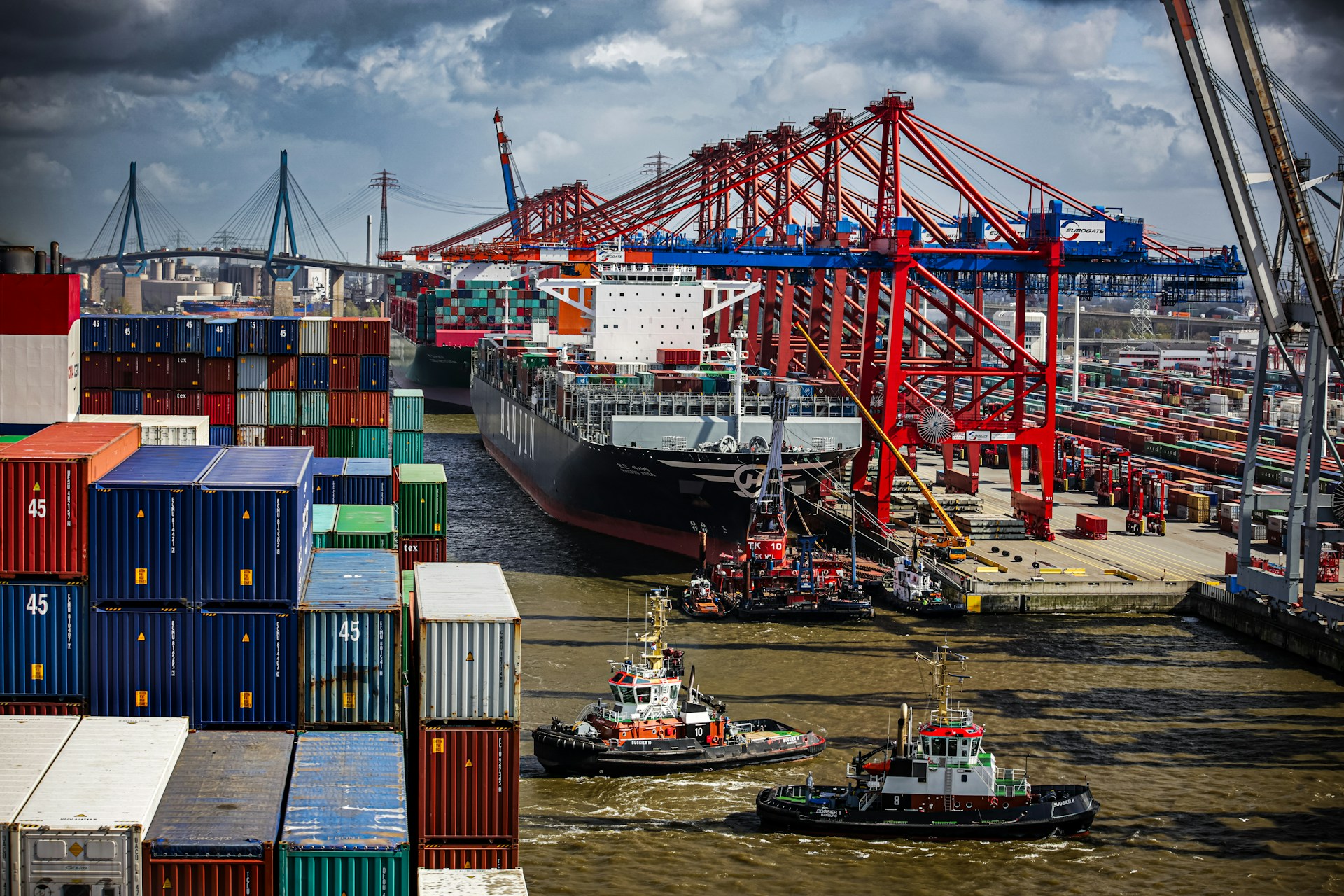
How Can You Benefit From Logistics Models and Simulation?
November 9, 2021 - Emily Newton
Revolutionized is reader-supported. When you buy through links on our site, we may earn an affiliate commision. Learn more here.
Logistics is a vital part of the world economy and daily life that keeps everything moving. Simulation and logistics modeling offer unique opportunities to advance logistics planning on a whole new level. They create strategies optimized for peak efficiency, prepared for any eventuality and primed for innovation. Business simulations are particularly exciting, such that some logistics simulators have even broken into the consumer market as video games. Logistics modeling, while less dynamic, provides a solid framework to explore logistics plans through. It primarily uses math to predict outcomes. Both can be highly beneficial for logistics planners, with a few key perks.
Testing New Ideas in Business Simulations
Logistics simulations and modeling are fantastic tools for testing new ideas for logistics plans without any of the risk or time commitment involved. In real life, testing out a new plan is intimidating because tangible assets and priorities are on the line. This can make it tempting to stick to one plan beyond its lifetime or hesitate when it comes to making adjustments or improvements.
With simulations and modeling tools, though, logistics planners can easily test out any number of new ideas or strategies. This approach poses no risks to their organization or the logistics plan they already have in place. Acting like a “practice run”, simulations allow logisticians to operate an entire virtual version of their supply chain, business model or logistics plan. These simulations are so intuitive, versatile and engaging that some have even broken into the consumer market.
For example, the game TransRoad USA simulates the process of running a trucking company. It operates like a resource management video game, but everything is based on real-life conditions. Players hire drivers, buy trucks and vehicles, choose clients to work with and manage their own trucking routes between real American cities. Simulations like this allow logistics planners to put any number of new strategies to the test and play through them as many times as needed to get them right. As a result, logistics specialists already have a good understanding of how a new strategy will work when they put in action in real life.
Optimizing Logistics Plans
Logistics simulations and models are good for getting an overview of a supply chain, business model or logistics strategy. They may even offer new perspectives. Especially when simulating an all-new strategy, logistics planners may find themselves looking at their current strategy in new ways. Perhaps they notice one step of the manufacturing process is much faster in their simulation. They can then take a focused look at their current logistics strategy and compare the two to identify what can be improved. This ability to troubleshoot and quickly identify bottlenecks is highly valuable for optimizing supply chains. Even stumbling blocks that are clear in real life may be easier to understand and trace using simulation and modeling tools.
Once those bottlenecks and inefficiencies are identified, simulations make it quick and easy to work out the best solution. Testing out these solutions in real life could take days, weeks, or even months and potentially slow down productivity along the way. Strategizing and problem-solving in a simulation environment can happen in hours or a day or two, all without interrupting activity. Implementing AI in the supply chain can be an especially effective and innovative solution for optimizing efficiency. In fact, simulation could drive productivity and efficiency since it is so straightforward to keep testing out new tweaks and improvements to maximize optimization.
Preparing For Anything
In business, preparation is everything. Strategists, analysts and logisticians can plan every detail of a logistics strategy. However, it is difficult to prepare for unknowns. Things happen or change with little to no warning. This is because random events defy planning. Examples include intense acts of nature or natural disasters, global emergencies, employee strikes or walkouts, economic disasters, cyberattacks and publicity crises. There are countless challenges facing logistics today, and events like these are incredibly difficult to anticipate. Logistics simulation and modeling tools make it possible to prepare for those random, impactful events.
While options may vary by industry, many logistics simulators have a certain level of “randomness.” Players may be peacefully managing their computer supply business when the simulator springs a week-long power outage on them, the result of an in-game hurricane knocking out power lines. When these things come up in the simulation, players can try out different scenarios for working around the challenge, compensating for it or coming back from setbacks. This experience and data can then be applied to real-life preparation for worst-case scenarios.
Similarly, when working with logistics modeling, people can research different scenarios to predict how they might affect the supply chain and logistics network. Returning to the previous example, scientists have a clear understanding of how hurricanes behave. Those storms provide ongoing historical real-life examples on which to base predictions. A logistics strategist could accumulate a collection of potential scenarios then work through them piece by piece, asking questions like, “how will this affect my workers?”, “how will this affect each stage of my supply chain?” and “how will this affect my customers?”. This is a more traditional way of approaching emergency scenario preparation. However, it covers the same ground as crisis management in simulations.
Types of Simulations and Modeling
The various types of logistics simulations and modeling share similar goals but differ in their methodology. The best planning solution will depend on a business’s specific industry, and, even within that, some pieces of software or model types may work better than others for one business or another.
Business Simulations
Simulations take a couple of different approaches. One style is the simulation game. The previously mentioned TransRoad USA simulation is a prime example of this category. Game-ified simulation tools offer an all-encompassing experience, putting the player in charge of an entire enterprise that is fully fictional. These are essentially advanced lifelike resource management games. The key advantage of simulation games is that they are immersive and programmed to operate a certain way, including randomization. This randomization can be simulated on all levels, to lifelike precision, from randomized employee efficiency to simulated crises. Engaging and robust, these simulations can be an excellent way to experiment with logistics strategies.
There are also simulation tools that work on a much smaller, customizable scale. Examples include a digital model of a business’s real-life warehouse, programmed to behave the way it would in real life. While this kind of simulation may not be as game-like as the first type, some strategists may find it more useful since it is customized to simulate their actual circumstances. The downside to these customized simulations is that they are likely to be more expensive than the more general game-type simulations.
Optimization Modeling
The immersion of simulation for planning isn’t right for every business or industry. Optimization modeling is rooted in mathematical formulas and numerical models that are used to evaluate circumstances from user input and predict outcomes. It has the same objective as simulation, predicting the outcomes of a logistics model, but achieves that objective through completely different means. Likewise, while simulation may be a sort of perpetual experience (one that is not designed to have a definite end or solution but provides opportunities for experimentation), optimization modeling aims to pinpoint solutions for creating the most efficient, highest-performing logistics network possible. There are various methods of conducting optimization modeling, with linear programming being a popular choice. Linear programming focuses on maximizing or minimizing cost by determining the best way to utilize a specified resource.
Modeling For Growth
Logistics is at the heart of commerce and business, taking products on their journey from manufacturing to the hands of happy customers. Logistics modeling and business simulation can help optimize that journey for success at every stage. Whether faced with a tornado or a supply delay, planning ahead with modeling and simulation tools may be the key to not only weathering the storm but growing into a more efficient, productive business.
Revolutionized is reader-supported. When you buy through links on our site, we may earn an affiliate commision. Learn more here.
Author
Emily Newton
Emily Newton is a technology and industrial journalist and the Editor in Chief of Revolutionized. She manages the sites publishing schedule, SEO optimization and content strategy. Emily enjoys writing and researching articles about how technology is changing every industry. When she isn't working, Emily enjoys playing video games or curling up with a good book.




